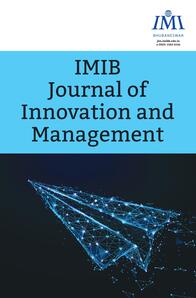
1 Department of Food Business Management and Entrepreneurship Development, National Institute of Food Technology Entrepreneurship and Management, Sonepat, Haryana, India
This article is distributed under the terms of the Creative Commons Attribution-NonCommercial 4.0 License (http://www.creativecommons.org/licenses/by-nc/4.0/) which permits non-Commercial use, reproduction and distribution of the work without further permission provided the original work is attributed.
Blockchain is an emerging technology, showing possibilities in many fields. It has provided its mark in finance with cryptocurrency. Its security, robustness, interoperability and reliability have promised application in various areas, but the demonstrated use of blockchain technology is rare. The stakeholders are in the process of decision-making about the adoption of blockchain and assimilating with this new technology. This article discusses blockchain technology adoption with theories that were formed on adoption, infusions and assimilation of technologies by firms and individuals.
Blockchain technology will be adopted by firms, but most of the theories of adoption have been developed around individuals. Therefore, an assumption has been made that the premise for the firm will be the same as the premise for individuals, in the context of blockchain. Various firms, and the Indian government, are in the process of decision-making regarding blockchain. This article delivers explanations of constructs of different theories in the context of blockchain technology. This explanation will help practitioners to understand and analyse the adoption of blockchain technology in the context of their industry practice, and for academicians, it will act as the base to develop measurement tools for different assessments in the blockchain.
Blockchain management, blockchain adoption, technology adoption, technology assimilation, adoption theories
Ajzen, I. (1991). The theory of planned behavior. Organizational Behavior and Human Decision Processes, 50(2), 179–211.
Bandura, A. (1986). The explanatory and predictive scope of self-efficacy theory. Journal of Social and Clinical Psychology, 4(3), 359–373.
Davis, F. D. (1989). Perceived usefulness, perceived ease of use, and user acceptance of information technology. MIS Quarterly, 319–340.
Davis, F. D., Bagozzi, R. P., & Warshaw, P. R. (1992). Extrinsic and intrinsic motivation to use computers in the workplace. Journal of Applied Social Psychology, 22(14), 1111–1132.
Fichman, R. G. (1995). The Assimilation and Diffusion of Software Process Innovations. PhD Thesis. Massachusetts Institute of Technology.
Fichman, R. G., & Kemerer, C. F. (1997). The assimilation of software process innovations: An organizational learning perspective. Management Science, 43(10), 1345–1363.
Fishbein, M., & Ajzen, I. (1977). Belief, attitude, intention, and behavior: An introduction to theory and research. Philosophy and Rhetoric, 10(2).
Fishbein, M. (1979). A Theory of Reasoned Action: Some applications and implications. Nebraska Symposium on Motivation, 27, 65–116.
Fishbein, M., & Ajzen, I. (1977). Belief, attitude, intention, and behavior: An introduction to theory and research. Philosophy and Rhetoric, 10(2), 130–132.
Gartner. (2021). Blockchain Platforms reviews 2021. Gartner Peer Insights. https://www.gartner.com/reviews/market/blockchain-platforms
Government of India. (2021). National strategy on Blockchain. https://negd.gov.in/sites/default/files/NationalStrategyBCT_%20Jan2021_final_0.pdf
Iansiti, M., & Lakhani, K. R. (2017 January–February). The truth about Blockchain. Harvard Business Review. https://hbr.org/2017/01/the-truth-about-blockchain
Meyer, A. D., & Goes, J. B. (1988). Organizational assimilation of innovations: A multilevel contextual analysis. Academy of Management Journal, 31(4), 897–923.
Rogers, E. M., & Cartano, D. G. (1962). Methods of measuring opinion leadership. The Public Opinion Quarterly, 26(3), 435–441.
Rogers, E. M. (2004). A prospective and retrospective look at the diffusion model. Journal of Health Communication, 9(S1), 13–19.
Sykes, T., Venkatesh, V., & Gosain, S. (2009). Model of acceptance with peer support: A social network perspective to understand employees’ system use. Management Information Systems Quarterly, 33(2), 371–393.
Tapscott, D., & Tapscott, A. (2018). Blockchain revolution. Penguin Random House.
The Times of India (TOI). (2022, February 2). Cryptic on crypto? FM proposes 30% tax on gains, say call on legal status pending, 1.
Thompson, R. L., Higgins, C. A., & Howell, J. M. (1991). Personal computing: Toward a conceptual model of utilization. MIS Quarterly, 15(1), 125–143.
Triandis, H. C. (1977). Interpersonal behavior. Brooks/Cole Publishing Company.
Uzzi, B. (1996). The sources and consequences of embeddedness for the economic performance of organizations: The network effect. American Sociological Review, 61(4), 674–698.
Venkatesh, V., & Davis, F. D. (2000). A theoretical extension of the technology acceptance model: Four longitudinal field studies. Management Science, 46(2), 186–204.
Venkatesh, V., Morris, M. G., Davis, G. B., & Davis, F. D. (2003). User acceptance of information technology: Toward a unified view. MIS Quarterly, 27(3), 425–478.
Zhu, K., & Kraemer, K. L. (2005). Post-adoption variations in usage and value of e-business by organizations: Cross-country evidence from the retail industry. Information Systems Research, 16(1), 61–84.
Zhu, K., Kraemer, K. L., & Xu, S. (2006). The process of innovation assimilation by firms in different countries: A technology diffusion perspective on e-business. Management Science, 52(10), 1557–1576.